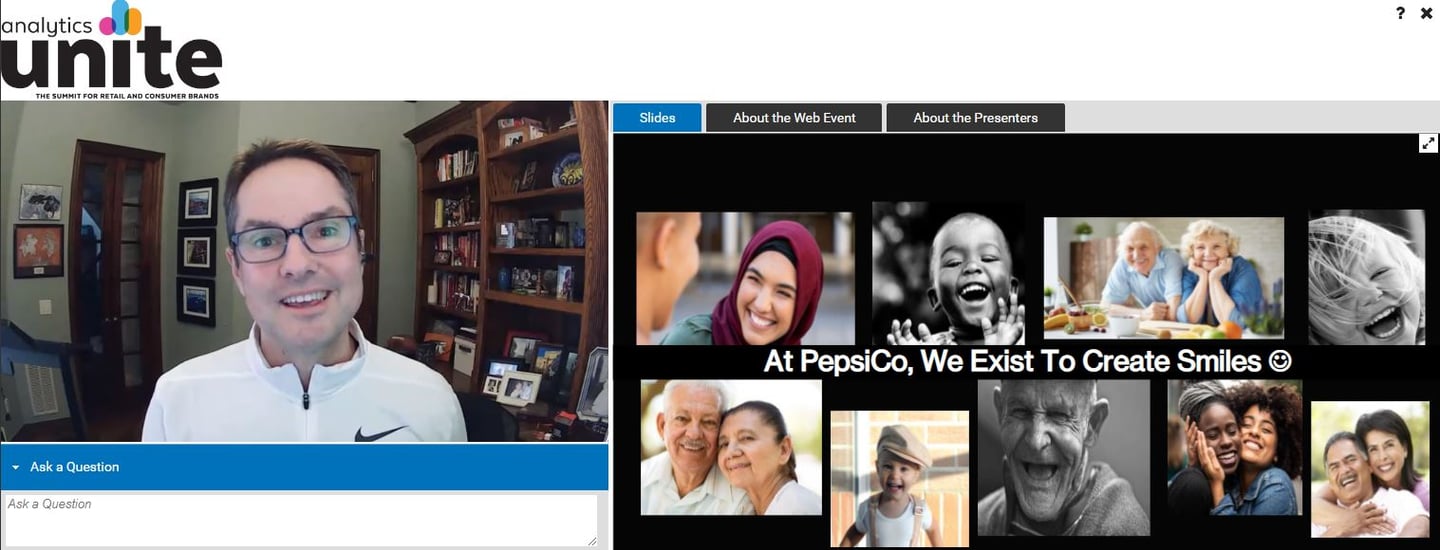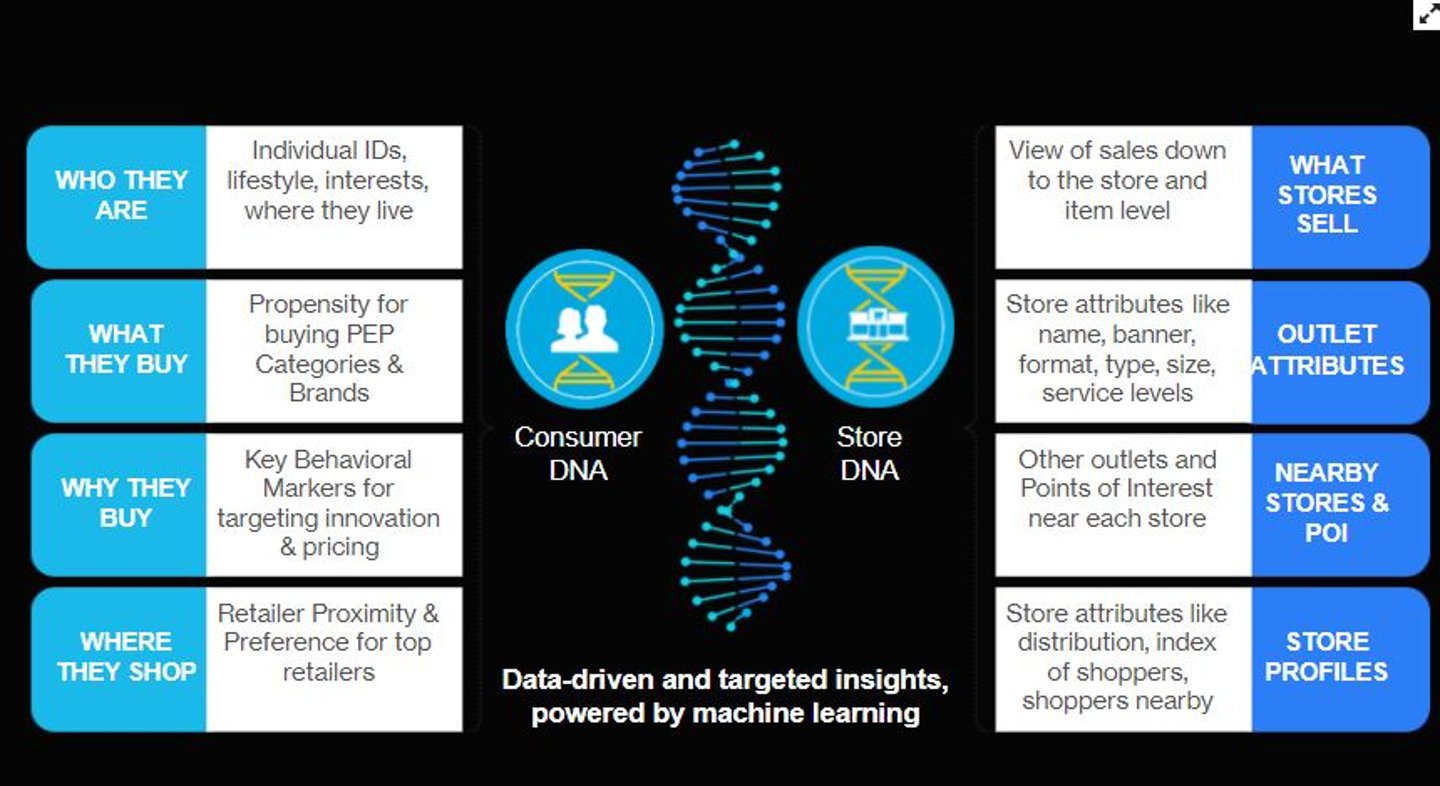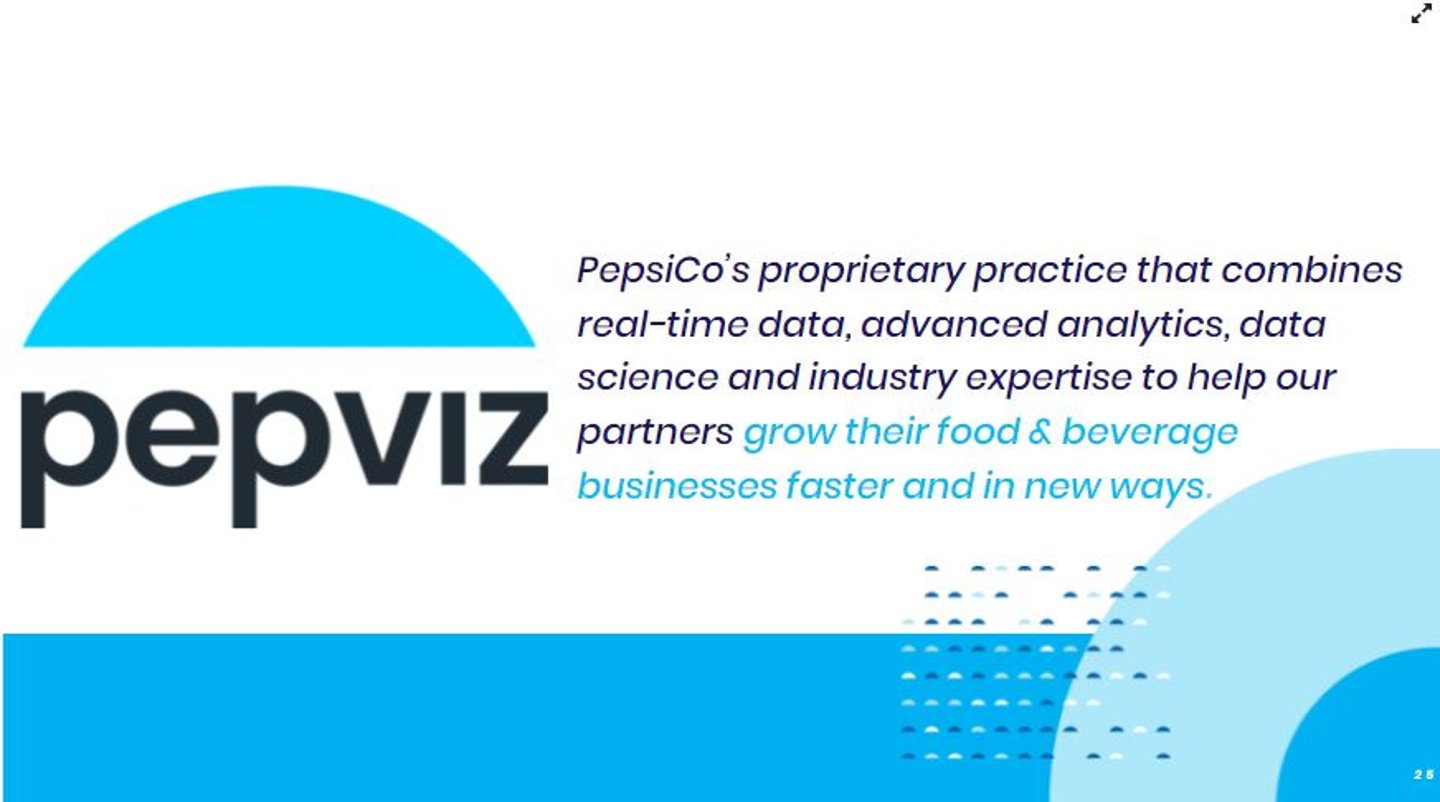3 Ways PepsiCo is Preparing for the Future Consumer and Generating Smiles
Many consumers know what PepsiCo is, and what it does, but they may not know why they do it. According to Jeff Swearingen, SVP-Demand Accelerator, PepLabs & GBS, “What I would tell them is that at PepsiCo, we really exist to create smiles.”
“Practically speaking, we’re in the convenient food and beverage business, but what we spend all of our time thinking about is how do we engage consumers and shoppers in a way that’s uniquely motivating and delivers against not only their wants and needs, but their desires … and generates smiles.”
However, Swearingen explained during his Analytics Unite 2021 keynote, that it has been a tough year for smiles after the pandemic hit. “But there have been many things that have challenged the way that we live, the way that we do business, and the way that we operate. In the midst of those challenges, there are always opportunities."
So, what does the future consumer look like, and how can we prepare for them? That is the question on the mind of every retail and consumer goods executive, and there is no clear-cut answer. But one thing is certain: The consumer landscape is rapidly evolving, and only those organizations able to seamlessly adapt will enjoy prolonged success.
For starters, Swearingen encouraged CGs to be a part of the solution, “and be the lighthouse that illuminates the path forward for our industry.” PepsiCo aims to do so for its consumers, retail partners and customers who have gone through tremendous upheaval and challenges over the past 15 months.
And just as important, it does so for its frontline associates, as so much of its business is through direct-store delivery. “We’re blessed with a small army of people that call on our customers and stores every day, so we’re mindful to deliver for customers, consumers and our frontline,” he added.
In order to accomplish this, Swearingen said there are three steps CGs need to take:
No. 1: LISTEN
“We, as a society, have developed much greater empathy,” said Swearingen. “We have been focused on doing a better of job of listening with empathy to not only what’s going on but the underlying motivators of the actions we see and what people are struggling through, so we can understand at a deeper level … so we can see how to help.”
He noted that the industry needs to spend time with consumers, try to observe and understand them at a very personal or human level. Listen to the things they’re struggling with, and things that they aspire to, and figure out the role CGs may be able to play.
“It may sound kind of ambitious for a convenience food and beverage company, but we do take it seriously so we can understand how to add value to their lives,” said Swearingen, before adding that it’s a skill that has been a challenge without travel.
No. 2: LOOK
“And when we look, we often look with data and advanced analytics.” This is critical right now as CGs are all trying to use analytics and big data in ways to understand how to deliver to consumers, while understanding their needs.
PepsiCo does this with two primary datasets, which it calls: 1. consumer DNA and 2. store DNA. On the consumer side, PepsiCo uses the data to better understand who consumers are including their lifestyle interests, and where they live; the things that make them tick; what they buy, how often they buy, interdependencies in different categories and products; why do they buy and where they shop.
Whereas, on the store side, PepsiCo wants to understand what stores are disproportionally selling products and categories, attributes of those stores — not just store format, but also services (travel, photo, etc.). It looks to understand nearby stores and points of interest.
“This allows for latent demand or demand that doesn’t exist yet but is visible when you understand what happens around a store, so you can make changes to unlock growth. When PepsiCo connects these datasets, it creates what we call media-to-shelf solutions.”
No. 3: DREAM
“Once we’ve listened and looked, we want to dream and ask ourselves things like ‘What if we could identify the unique desire if each consumer when it comes to our categories?’” We want to think as high as we can about what is possible.
Swearingen hit on other key topics, including marketing mix modeling, innovation, delivering on expectations set by marketing, and optimizing the consumer experience.
“The world we live in today is just too dynamic for that [marketing mix modeling]. So, we’ve spent a lot of time and invested a lot in trying to develop more real-time optimization capabilities, so that as we use data and insight to create this programming, we execute against it, and we pull it all the way through to retail,” Swearingen explained. “We can read not only what happens, but to some degree why it happened, and then we can use machine learning to create perpetual optimization of our investments so we get better each cycle.”
Swearingen admitted that PepsiCo is not 100% there yet, but he is making it a priority for the future, showcasing PepViz, the company’s propriety practice that involves a lot of listening, collaborating and co-developing, while including data and advanced analytics.




